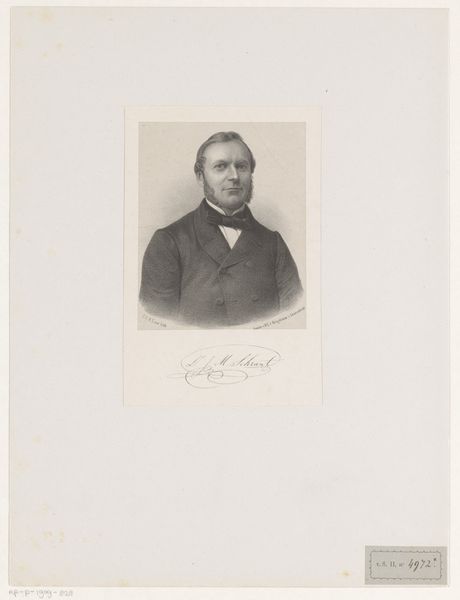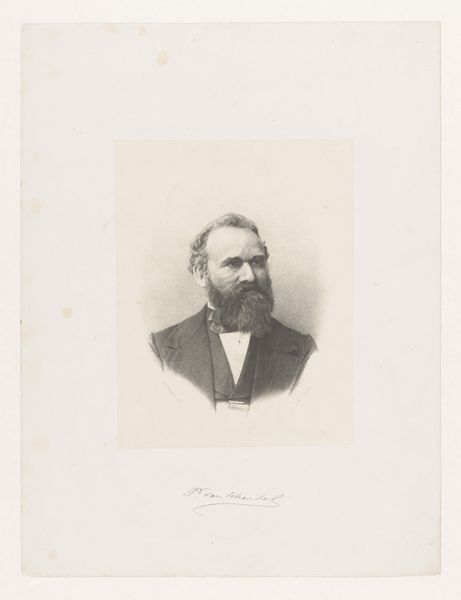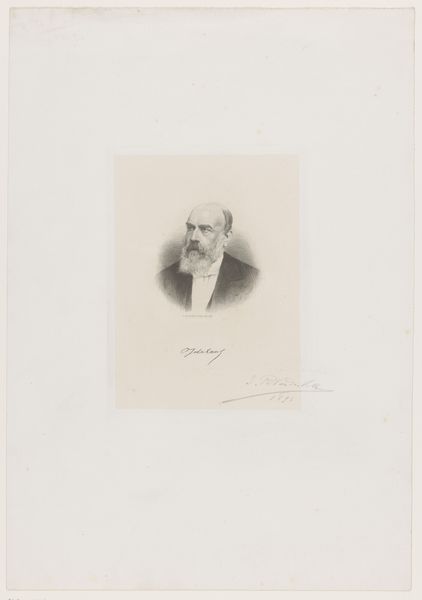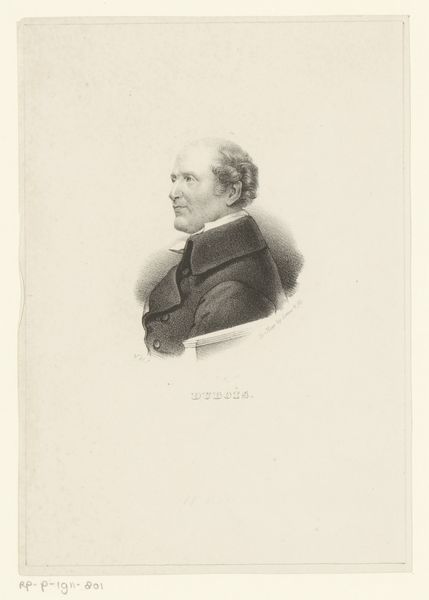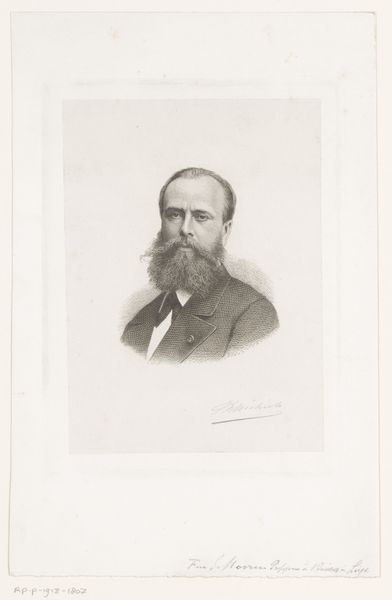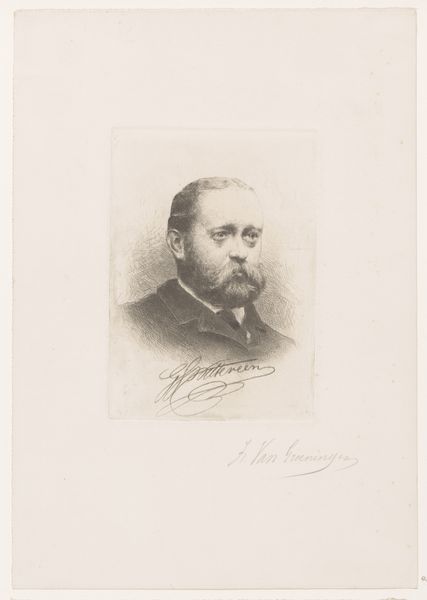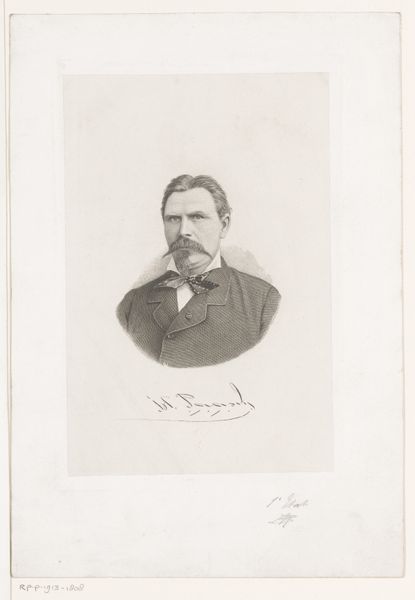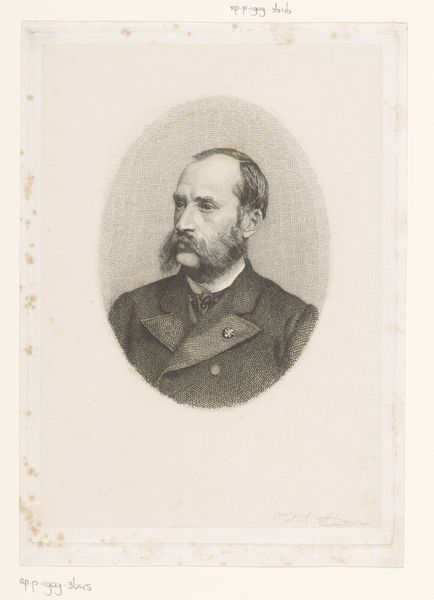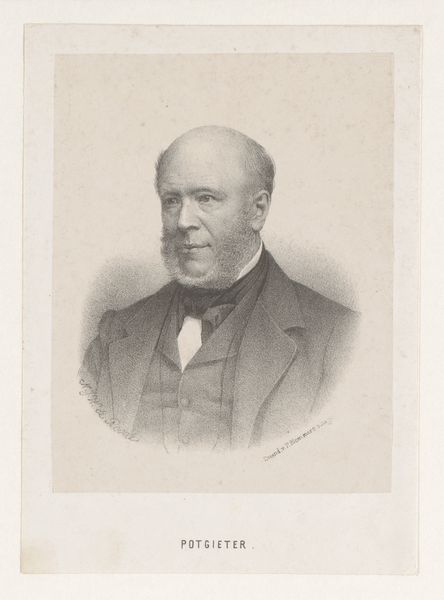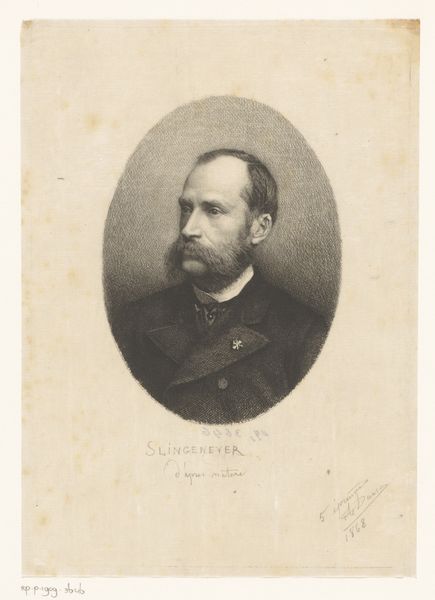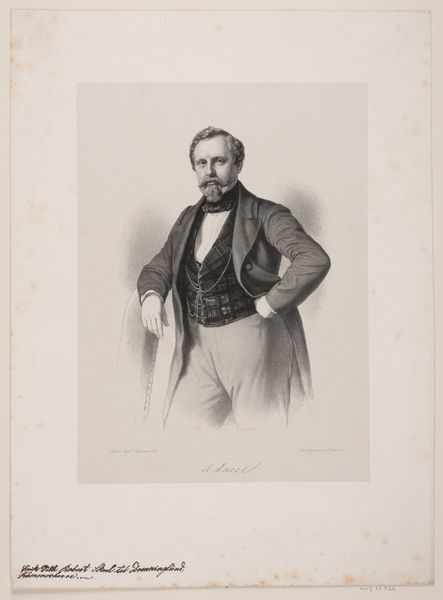
print, engraving
#
portrait
#
toned paper
# print
#
old engraving style
#
figuration
#
portrait reference
#
limited contrast and shading
#
portrait drawing
#
academic-art
#
engraving
#
realism
Dimensions: height 121 mm, width 87 mm
Copyright: Rijks Museum: Open Domain
Curator: We're looking at "Portret van Jean Servais Stas," an engraving crafted sometime between 1839 and 1909. Editor: It's understated, almost whisper-quiet. A gentle portrait, and rather melancholy. The limited contrast softens everything, even the man's stern gaze. Curator: It’s the work of Auguste Danse. What I find fascinating is thinking about how such detail emerges from the laborious process of engraving, each line etched into a plate. We forget the sheer amount of labor that goes into these prints. Editor: Absolutely, there’s something deeply satisfying in that handcrafted feel. You imagine Danse hunched over his tools, meticulously rendering each hair of Stas's impressive beard. Stas, staring pensively out. It really captures the inner man, or perhaps the image he wants to project. Curator: It's more than just capturing likeness; there's an entire social context embedded in the choice of materials, the subject, and the act of commissioning a portrait like this. Prints like these circulated information but also solidified status, particularly for someone like Stas, who, as a chemist, probably embraced the objective image to reinforce public understanding of chemistry through people like him. Editor: That’s a great point – so this image could serve some other utility besides pure admiration, acting more like publicity! But you can't escape the human element. Despite the controlled lines of the engraving, I sense a genuine vulnerability in Stas’ eyes. It really does transcend the medium itself, which feels miraculous. Curator: Exactly. What begins with material and technique ultimately leads to something quite personal, blurring the line between art and document. Thinking about the class dimensions, the use of paper, the kind of ink available at the time, the social values inscribed by the labor to construct these prints, helps understand how artistic gestures are made. Editor: Looking closely makes me feel how profoundly connected we all are, regardless of era or background. The way he gazes, his furrowed brow - it makes me wonder about my own worries, too. Curator: For me, the work encapsulates art history, class dynamics, portraiture, and production - so much historical insight from a relatively unassuming artwork. Editor: And for me, it has opened a door. I have the distinct feeling that I know Stas just a little bit, as if he’d confided in me.
Comments
No comments
Be the first to comment and join the conversation on the ultimate creative platform.

